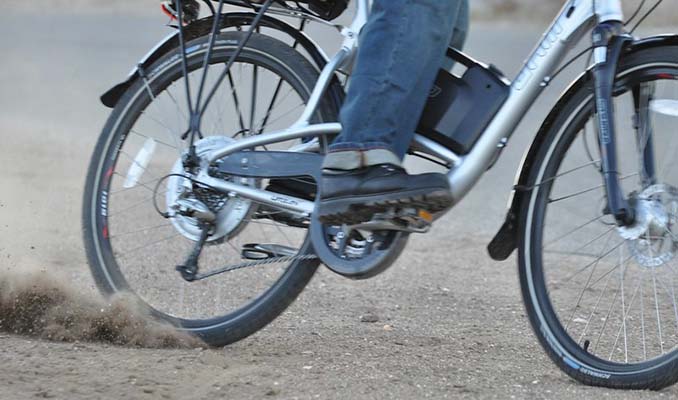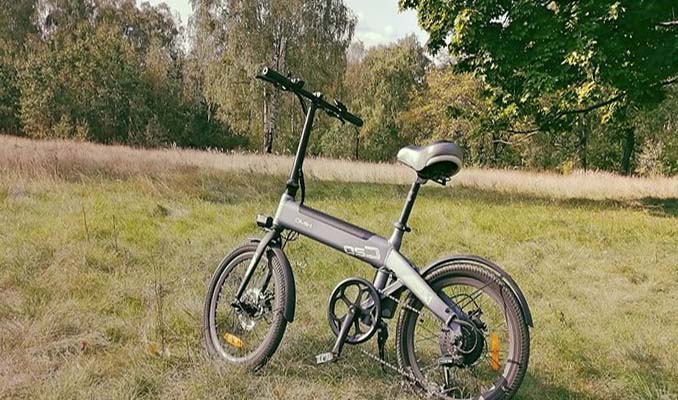Choosing your first electric bike is a life-changing decision, but navigating through models and prices can be a real jungle. However, with our guide to informed purchasing on models, features, weight, and price, you can navigate through it.
Acquiring your first e-bike is a life-changing decision that can benefit your health and well-being, reduce pollution, and save you money by limiting the use of a car. However, it is also an important and potentially expensive decision. The world of pedal-assist bicycles can seem like the Wild West to those approaching it for the first time due to the enormous number of choices available.
Read more:
How do I choose my first electric bike? Here are some factors to consider before purchasing your first e-bike.
Contents
Intended Use
The first step to narrowing down your search is to define how you plan to use your e-bike. Do you want it for exercise and/or leisure? Will you use it for practical purposes such as commuting, shopping, or as an alternative to car travel? Do you intend to ride exclusively on asphalt or also on dirt roads and trails?
If fun and fitness are your goals, an electric mountain bike (eMTB) might be the best choice, especially if you want to tackle serious off-road terrain. However, the additional cost of complex suspension systems and sophisticated components may be unnecessary if you only plan to ride on easy dirt or gravel roads.
If you are a road cyclist looking for an extra boost to help you conquer steeper climbs, setting aside the competitive spirit, then an electric road bike (eRoad) might be your ideal choice. If you intend to stick to asphalt, perhaps with the occasional stretch of easy dirt road, “hybrid” e-bikes with wide tires and upright seating positions are probably the best category to consider.
This style of electric bike goes by many names, with some overlap in categories: hybrid, city, urban, cruiser, and trekking. In any case, they are pedal-assist bikes designed for those seeking a more comfortable ride and the ability to pedal farther, faster, and more easily.
Price
The current price threshold is around 1000$, but expect to spend at least 1,500$ for a model with high-performance brand components (double that for an entry-level eMTB). Like most complex products involving mechanics and electronics, you get what you pay for.
Those living in flat areas and/or desiring an e-bike for leisurely rides on bike paths can save money by opting for a model with a basic transmission (integrated into the rear or front wheel hub).
On the other hand, those living in hilly areas should probably invest more in advanced and high-quality transmission. In fact, on steeper climbs, a wide range of gears is necessary to reach the top, even with electric assistance.
Size and Weight
Electric bicycles undoubtedly weigh significantly more than their non-electric counterparts, generally weighing over 16 kilograms. Although lighter models are available, they will have a less powerful motor and a smaller battery since these two fundamental components usually correlate with weight, power, and range.
In turn, the frames must be sturdier to adequately support this additional weight. If your e-bike will be stored in a garage, eliminating the need to lift it or carry it upstairs to an apartment, then weight becomes less important.
Those who want to transport heavy loads or their young children must consider a pedal-assist cargo bike, which is better suited for transportation and offers excellent versatility but implies larger dimensions and heavier weights.
Conversely, those living in apartments and/or intending to use the electric bike for their home-to-work commute, including carrying it on public transportation, can focus their attention on a folding model.

Central or Hub Motor
As mentioned earlier, the motor has a significant impact on the weight, autonomy, and performance of your e-Bike. Choosing the right type of motor is probably the best decision you can make.
Motors fall into two main categories: hub-integrated or central motors, located inside the frame. Hub motors are generally found in the rear (or front) hub and propel the bike by directly accelerating the wheel. Central motors, on the other hand, add power to your pedal stroke, which is then transferred to the rear wheel through the drivetrain.
Hub motors are generally more affordable and suitable for most users, while central motors offer higher performance for specific uses and more demanding riders. Efficiency also differs, with central motors providing more range and power compared to hub motors with the same battery size. In general, hub motors are suitable for flat terrain with slight inclines, while central motors offer greater assistance when climbing.
For true pedal-assist bikes, the motor support is limited to a speed of 25 km/h and a nominal power of 250 W. There are also so-called S-Pedelecs, which have higher power and support up to 45 km/h, similar to mopeds and require registration for use on public roads open to traffic.
Battery and Range
Hub motor electric bikes generally weigh more because they require a larger battery to achieve the same range as central motor e-bikes. The terrain you ride on and the amount of assistance you use are factors that determine the range you can achieve with your battery.
Uphill climbs consume more power, as do higher levels of pedal assistance. Each manufacturer publishes estimated kilometers for each motor/battery package and their corresponding assistance levels. However, it’s important to note that real-world results are generally lower, and battery capacity decreases over time due to natural aging.
In-Store or Online Purchase
Buying from a bicycle shop that allows you to take a test ride before purchasing has undeniable advantages, although the pandemic has made this natural selection process more complicated.
A physical store also provides a place to bring your e-Bike when it needs repairs, as repairing an electric bike, especially due to the weight and complexity of the components, is more challenging than repairing a regular bike. Additionally, shopping at a local store is beneficial for your community.
That being said, online purchases can save you a lot of money. If you choose to proceed this way, make sure it is from a reputable brand that offers a warranty of at least two years.
Assistance and Maintenance
Wear and tear on mechanical and electronic parts are inevitable, especially for e-Bikes. The e-Bike will experience faster wear on the drivetrain and brake pads.
Eventually, everything breaks and needs repairs, which is why choosing a motor/battery from well-known brands that guarantee adequate service and support is always better than saving money on a cheap product of unknown origin and brand.
Look for e-bikes that use motor/battery packages from the most common brands and rely on certified retailers.
Safety
Many electric bikes, especially those intended for urban use, come with wheel locks that make them more difficult, but not impossible, to steal. If you have to leave your electric bike outdoors—such as in a courtyard or outside a supermarket—invest in a high-quality lock when you purchase it.
Ideally, you should be able to store your bike indoors or in a secure area overnight or when you’re at your place of study/work. Even in these situations, the size and weight of the e-Bike play a crucial role.
There is another type of safety to consider besides that of the e-Bike itself—your own safety. There is a high incidence of e-Bikers falling and getting injured, more or less seriously, because they are not accustomed to pedaling and riding at such speed and ease.
This is particularly true for older riders or those who have not been on a bike for many years. Investing in a helmet and taking it gradually if you are inexperienced are two options that should be carefully considered.


